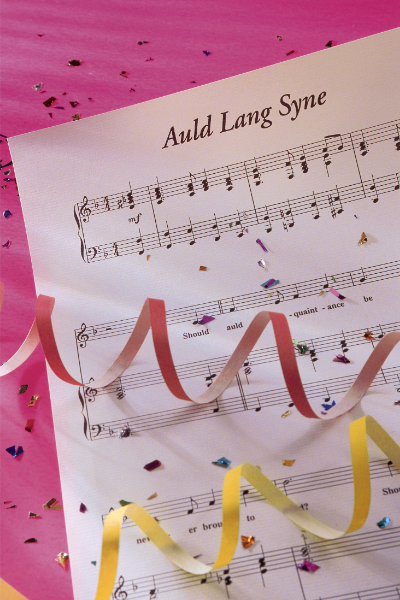Auld Lang Syne: A Timeless History
It’s almost midnight. Hands are joined, glasses are raised, and that familiar tune begins to echo through the room. Few songs capture a moment quite like Auld Lang Syne – a melody that feels both joyful and wistful, linking us to generations past.
But where did this song come from, and how did it travel from Scottish hearthsides to celebrations across the globe?
Origins of Auld Lang Syne
The roots of Auld Lang Syne reach back to late-18th-century Scotland. The version we know today was shaped by the beloved poet Robert Burns, who sent it to the Scots Musical Museum in 1788.
Burns himself said he’d heard an older man singing it and quickly “took it down from his recitation.” The melody and some verses came from an earlier folk song, but Burns wove in his own lines and rhythm – transforming it into something enduring.
What began as a fireside tune about friendship became Scotland’s gift to the world.
Meaning and Significance
The Scots phrase “Auld Lang Syne” translates roughly to “old long since” – or, as we’d say today, “for old times’ sake.”
It’s a song about remembering, about raising a cup to friends who shaped our lives, even if they’re far away. That’s why it so naturally closes gatherings, weddings, and above all, Hogmanay, Scotland’s New Year’s Eve.
As the clock strikes twelve, we join hands and sing together – a mix of nostalgia and hope for what comes next.


Popularity and Cultural Impact
Over time, Auld Lang Syne crossed oceans and found its place in popular culture. It has appeared in countless films, TV shows, and New Year’s broadcasts – perhaps most famously crooned by Frank Sinatra, whose version has become a midnight classic.
Each performance seems to add something new – a little slower, a little softer, but always familiar.
Auld Lang Syne Around the World
Though born in Scotland, Auld Lang Syne speaks a universal language. In Japan, the melody closes graduation ceremonies and even plays over shop speakers to signal the end of the day. In South Korea, it’s sung on New Year’s Day to welcome prosperity.
And in 1989, as people gathered at the Berlin Wall, voices joined together in the same tune – using a Scottish song to celebrate unity and new beginnings.


A Song That Endures
More than two centuries after Burns wrote it down, Auld Lang Syne still brings people together. It’s not just a song about the past – it’s a reminder to pause, look around, and be grateful for the company we keep.
So when the next New Year arrives and you take someone’s hand to sing, remember: you’re part of a tradition that’s travelled the world and stood the test of time.
Here’s to friendship, to memory, and to the promise of what lies ahead – for auld lang syne.
Lyrics
Should auld acquaintance be forgot,
And ne’er brought to mind?
Should auld acquaintance be forgot
And auld lang syne?
For auld lang syne, my dear,
For auld lang syne,
We’ll tak a cup o’ kindness yet
For auld lang syne.
And surely, ye’ll be your pint stowp!
And surely I’ll be mine!
And we’ll tak a cup o’ kindness yet,
For auld lang syne.
We twa hae run aboot the braes
And pou’d the gowans fine;
But we’ve wander’d mony a weary foot
Sin’ auld lang syne.
We two hae paidled i’ the burn,
Frae mornin’ sun till dine;
But seas between us braid hae roar’d
Sin’ auld lang syne.
And here’s a hand, my trusty fiere,
And gie’s a hand o’ thine;
And we’ll tak’ a right gude-willy waught,
For auld lang syne
What you should do next...
- Browse our plots to claim your title of Lord or Lady of the Glen
- Discover the masjetic Kilnaish Estate
- View our fun gifts and accessories, inspired by the Scottish Highlands